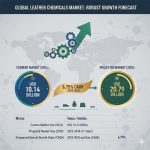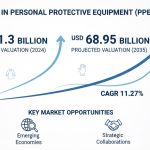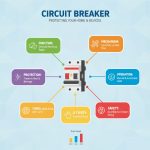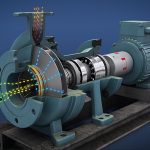Global Air Purifier Market to More Than Double by 2035, Driven by Pollution and Health Concerns
The global Air Purifier Market is gaining unprecedented momentum as concerns over indoor air quality, environmental pollution, and public health intensify. Based on the latest Vantage Market Research report, the market was valued at USD 24.15 billion in 2024, and is projected to reach USD 52.38 billion by 2035, growing at a CAGR of 7.30% between 2025 and 2035. This press release unveils key market trends, segmentation insights, regional dynamics, prominent players, recent developments, and future opportunities shaping the industry from 2024 to 2035.
Our comprehensive Air Purifier Market report is ready with the latest trends, growth opportunities, and strategic analysis. View Sample Report PDF.
Key Takeaways
- Revenue 2024: USD 24.15 billion
- Forecast 2035: USD 52.38 billion
- CAGR (2025-2035): 7.30%
- Largest Region (2024): Asia Pacific
- Fastest-growing Region: North America
- Dominant Filtration Technology: HEPA Purifiers lead share and likely to maintain dominance
- Major Application Segment: Commercial segment holds maximum share
Premium Insights
Air purifiers are becoming more than just consumer appliances—they are a health and environmental necessity. Rising air pollution (PM2.5, PM10, volatile organic compounds), growing public health awareness, and stricter regulatory standards are pushing adoption globally. Smart features (sensors, app-controls), quieter operation, energy efficiency, and multi-stage filtration (HEPA combined with activated carbon, ionizers etc.) are in high demand. In commercial spaces—offices, hospitals, schools—air purifiers are being deployed not only for comfort but for compliance. Asia Pacific’s urban pollution and North America’s regulation push are especially influential.
Market Size & Forecast
- 2024: USD 24.15 billion
- 2035: USD 52.38 billion
- CAGR (2025-2035): 7.30%
The market is expected to more than double over the forecast period. Early adopters and regions with significant air quality issues are leading, while emerging markets are catching up fast. Technological innovation and regulation will likely accelerate growth, particularly after 2025.
For Air Purifier Market Research Report and updates detailed: View Full Report Now!
Market Concentration & Characteristics
The air purifier market is moderately concentrated. A set of established companies with strong R&D, broad geographic presence, trusted brand names, and diversified product portfolios hold significant market share. Yet there remains room for regional players and niche manufacturers—especially in markets where cost sensitivity is high and product customization matters. Key differentiators include filtration efficiency (HEPA vs non-HEPA), multi-stage filtration systems, energy consumption, noise levels, smart connectivity, and maintenance costs. Environmental and regulatory pressures (e.g. energy efficiency, emissions, safety) shape product development and market entry.
Type Insights
The air purifiers market by type is segmented into portable air purifiers and in-duct air purifiers. Portable air purifiers dominate due to their affordability, ease of installation, and widespread adoption in residential and small commercial spaces. These devices are especially popular among urban households dealing with rising pollution and allergens. In-duct systems, integrated with HVAC units, are gaining traction in larger commercial and industrial facilities where centralized air cleaning is necessary, ensuring broader air quality management and long-term efficiency.
Filtration Technology Insights
Based on filtration technology, the market includes HEPA, activated carbon, ionic filters, UV light, and others. HEPA filters account for the largest share owing to their proven efficiency in removing fine particles, pollen, and allergens, making them the most trusted solution for residential and healthcare settings. Activated carbon filters are widely adopted for eliminating odors, smoke, and volatile organic compounds (VOCs). UV and ionic technologies, though niche, are gaining attention for advanced purification, offering antimicrobial benefits and addressing diverse consumer needs.
Application Insights
The application segment is divided into residential, commercial, and industrial. Residential applications lead the market due to growing consumer awareness of indoor air pollution, rising asthma and allergy cases, and increasing demand for healthier living environments. Commercial use, especially in offices, schools, and hospitality sectors, is expanding with stricter indoor air quality regulations. Industrial applications are also witnessing growth as manufacturers invest in air purification systems to comply with workplace safety norms and enhance employee health and productivity.
Regional Insights
North America Air Purifier Market Trends
North America is projected to be the fastest-growing region 2025-2035. Factors include heightened regulatory pressure on indoor air quality, consumer health awareness, high penetration of disposable income, and appetite for smart, connected devices. Demand in both residential and commercial sectors is strong, particularly in urban areas with seasonal pollution or wildfire smoke. Product innovation (quiet operation, energy efficiency, HEPA performance) also plays well here. The region also benefits from strong distribution networks and well-established HVAC infrastructure.
Europe Market Air Purifier Trends
Europe shows steady growth with an emphasis on sustainability, energy consumption, and regulatory compliance (VOC emissions, safety, efficiency). Consumers and businesses prefer products with robust certifications and eco-friendly designs. Filtration technologies like HEPA paired with activated carbon are popular. Commercial demand is strong in densely populated areas, public institutions, and workplaces. Residential growth is influenced by awareness campaigns, pollution alerts, and increasing adoption of smart home technologies. Overall, Europe is a mature market with strong regulatory oversight.
Asia Pacific Market Air Purifier Trends
Asia Pacific is the largest region in 2024 for air purifiers. Rapid urbanization, high levels of outdoor air pollution, growing middle classes, rising health awareness, and government initiatives (pollution control, clean air acts) are major drivers. Countries like China, India, Japan, South Korea are seeing strong demand from both residential and commercial sectors. Affordability, localized design, and scalable filtration systems matter. Smart, connected units and even low-cost portable purifiers show strong uptake. In this region the dual pressure of environmental issues and health drive both regulatory and consumer demand.
Latin America Market Air Purifier Trends
Latin America shows moderate but growing adoption. Urban air pollution (vehicle emissions, industrial activity), rising health concerns, and improvements in wealth and disposable income are pushing interest. However, challenges include inconsistent electricity supply, lack of strict regulatory frameworks or enforcement, import duties, and higher product costs. Affordable, robust, low-maintenance air purifiers are preferred. Commercial settings such as offices and hotels along with residential use in cities are key segments. Adoption is expected to increase especially where awareness and infrastructure improve.
Middle East & Africa Market Air Purifier Trends
In the Middle East & Africa, demand is growing in wealthy urban centers, luxury developments, hospitality, and healthcare sectors. High temperatures, dust storms, and poor air outside are often compounded by indoor pollutant concerns. However, cost sensitivity, power reliability, and lower regulatory enforcement are restraints. Portable and stand-alone units are popular. Government investments in urban infrastructure and air quality monitoring help drive awareness. Over time, as incomes grow and product costs fall, uptake is expected to broaden into more markets.
Top Key Air Purifier Companies:
The Vantage report identifies a number of leading global players that are strongly positioned in the Air Purifier market. These include:
- Honeywell International
- IQAir
- Koninklijke Philips N.V.
- Unilever PLC
- Sharp Electronics Corporation
- Samsung Electronics Co., Ltd.
- LG Electronics
- Panasonic Corporation
- Whirlpool Corporation
- Dyson
These companies compete on technology (efficiency, filtration type), smart features, energy usage, cost & maintenance, quiet operation, and geographic reach.
Recent Developments
- In late 2024, Dyson launched a new line of smart air purifiers with improved HEPA filtration, real-time air-quality sensors, and quieter operation targeting urban households.
- In 2025, Samsung Electronics introduced a connected air purifier model with IoT integration for remote monitoring and control, including advanced filtration with multi-stage HEPA + activated carbon filters. (Company announcement)
Air Purifier Market Future Scope
Vantage Market Research’s Global Air Purifier Market Report provides a detailed evaluation of market size and growth forecasts from 2024 through 2035, including revenue figures and the calculated CAGR for the period. The scope includes segmentation by Type (Stand-alone vs In-duct), Filtration Technology (HEPA; Other technologies such as ionizers, electrostatic precipitators, ozone generators etc.), Application (Residential, Commercial, Industrial), and Geographical Regions (North America; Europe; Asia Pacific; Latin America; Middle East & Africa). The report also offers profiles of the major players, their strategic initiatives, product portfolios, innovations, and competitive strategies. Alongside quantitative metrics, qualitative analysis explores market drivers, restraints, opportunities, and challenges, as well as regulatory, technological, and consumer behavior trends influencing the industry.
Market Dynamics
Driver:
Growing awareness about indoor air quality and escalating air pollution levels globally (especially in urban centers) are pushing consumers and institutions to invest in air purifiers. Healthcare concerns—such as respiratory diseases, allergies, and recently airborne pathogens—are increasing demand. Government regulations, environmental norms, and public health campaigns reinforce consumer and regulatory pressure. Additionally, the rising smart home and IoT adoption encourages features such as remote monitoring, sensors, and energy-efficient performance.
Restraint:
High cost of premium air purifiers (especially those with HEPA filters, multi-stage filtration, smart connectivity) can deter price-sensitive consumers. Also, maintenance costs (filters replacement), power consumption, noise levels, and reliability (durability of filters, performance over time) act as barriers. In some regions, inconsistent electricity infrastructure or lack of after-sales support may limit adoption. Further, competing alternatives (simple filters, ventilation systems, air curtains) may reduce demand in some cases.
Opportunity:
Innovation in filtration technology (e.g. more efficient, lower cost HEPA, hybrid filters, UV/UV-C, photocatalytic oxidation), smart connectivity (app control, AI sensors, air quality feedback), portable designs, and lower power consumption provide significant opportunity. Emerging markets in Asia, Africa, and Latin America have untapped potential as awareness, disposable incomes, and health infrastructure improve. Regulatory initiatives for indoor air quality, subsidies or incentives, and environmental standards may also boost adoption.
Challenges:
Ensuring product safety and meeting regulatory & certification requirements (e.g. filter efficiency, emissions, noise, ozone generation) across different markets is complex. Balancing cost and performance, particularly making high-end features affordable. Managing supply chains for filter materials and electronic components. Ensuring long-term maintenance support (spare parts, filter replacements). Overcoming skepticism or lack of awareness in some regions about indoor air quality issues. Managing energy consumption and environmental footprint of both manufacturing and disposal.
Global Air Purifier Market Segmentation
- By Type: Stand-alone; In-duct
- By Filtration Technology: HEPA; Other Filtration Technologies (Electrostatic Precipitators, Ionizers, Ozone Generators, etc.)
- By Application: Residential; Commercial; Industrial
- By Region: North America; Europe; Asia Pacific; Latin America; Middle East & Africa
Frequently Asked Questions
Q.1 What was the market size of the global air purifier market in 2024?
- USD 24.15 billion.
Q.2 What is the forecast market size by 2035 and growth rate?
- The market is projected to reach USD 52.38 billion by 2035, with a CAGR of 7.30% from 2025 to 2035.
Q.3 Which region is currently largest, and which will grow fastest?
- Asia Pacific is the largest region in 2024. North America is expected to grow fastest over the forecast period.
Q.4 Which filtration technology dominates?
- HEPA purifiers. Other technologies (ESP, ionizers, ozone, etc.) also contribute, but HEPA holds the largest share.
Q.5 What are the top application segments?
- Commercial is currently the largest application segment, followed by residential and industrial.
Q.6 Who are some major players in the air purifier market?
- Honeywell, IQAir, Philips, Unilever, Sharp, Samsung, LG, Panasonic, Whirlpool, Dyson, Carrier among others.
![[Market Research Reports] – Research Google News Blog | VMR.Biz](https://www.vmr.biz/wp-content/uploads/2022/12/logo-removebg-preview.png)











